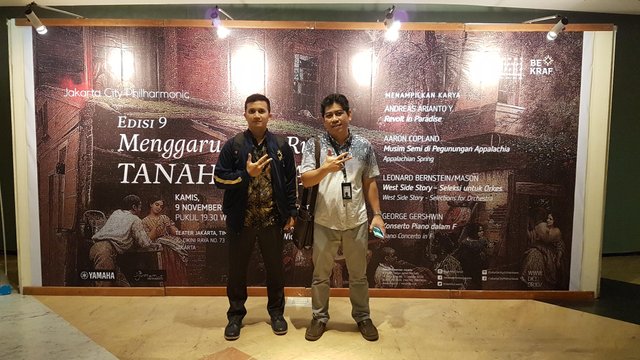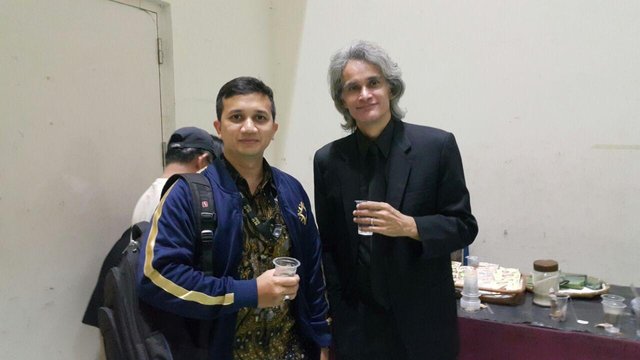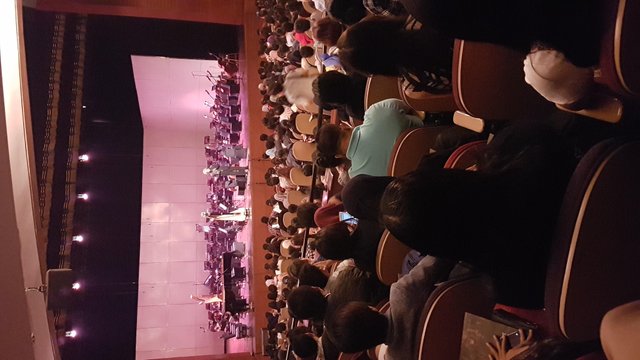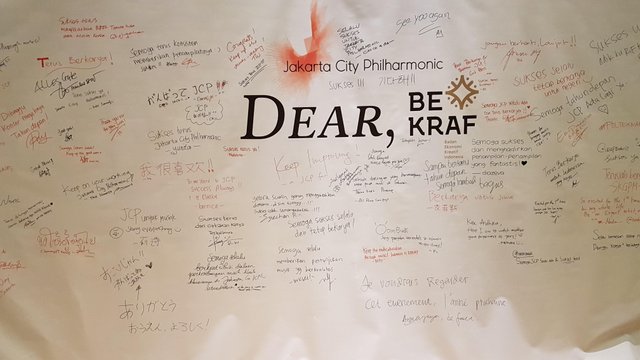Orkestra di Indonesia ; music classic
The presence of orchestral music in Indonesia is caused by contact with Western nations. Western influences in art have occurred much as revealed by R.M. Soedarsono following,
Western influences (Europe) that started from the arrival of Portuguese traders, which was followed by the presence of people (brasswind section), and percussion section (percussion section).
In the early days of the orchestra, in the Baroque period (1720) there was a small orchestra consisting only of friction instruments (6 violins, 3 viola, and 2 cellos) and continuo (harpsichord, an instrument that sounded continuously in a composition).
In the Classical Period (1790) the instrument of thump, timpani, and horn began to be used although still rare. Certain characteristics of the classical orchestra are without the use of continuos, but replaced with larger friction sections (14 violins, 6 violins, 4 cellos, and 2 double bass) and 2 players for each flute, oboe, clarinet, horn, tympanic.
Early Western music contacts on the island of Java can be observed from the description of Sumarsam which mentions the presence of European sailors who docked on the island of Java following,
The earliest introduction of European music in Java can be traced to the roots of the music brought by ship sailors who stopped in the island of Java in the sixteenth century. Francis Drake is an example, landed on the southern coast of Java, he wrote in his travel book that the ship's musicians played music for a king (or local ruler), then a king responded with his music. There is no identification of this local music, whether gamelan or other musical ensembles. The ship's musicians consist of 1 trumpet player and four (possible friction players). Trumpet is an important instrument on board, for signs of respect.
The second stage is the music brought by Portuguese traders. Their music is carried and played by their slave slaves of Indians, Africans and Southeast Asians.
Western music also experienced developments in the palace environment, as stated Soedarsono in the book Indonesian Performing Arts In the Era of Globalization below:
Western influence on music is very prominent In the palaces of Central Java (including the Special Territory of Yogyakarta), Western music also infiltrated the gamelan ensemble. In some gending compositions or songs that accompany the dance of the baya and serimpi daughter of the Yogyakarta palace, infiltrate several Western musical instruments, such as drums, trombones, trumpets, and sometimes clarinets.
The musical performances at the Yogyakarta Palace experienced a great improvement during the reign of Sultan HB VIII (1921-1939), with the presence of Walter Spies at the end of November 1923. Spies had a huge role in the development of musical life in Yogyakarta. Spies gets a regular job as a music instructor and conductor of Kraton Orkest Jogja with a salary of 100 founsterling per month. Besides Kraton Orkest Jogja there is also Societet de Vereeniging Orkes which was founded by 1822 by plantation entrepreneur in Yogjakarta. The orchestra is led by Attilio Genocchi of Italy and Carl Gotsch of Austria.
The development of orchestral music in Indonesia is experiencing the ups and downs, in the 50s in Jakarta had been a golden era of orchestral music, but unfortunately there is no evidence of recording or physical records of orchestral music, as ever expressed by the conductor Twilite Orchestra Addie MS in the introduction to the Twilite Orchestra book written by Ninok Leksono (2004). It is based on this fact that the Twilite Orchestra is inspired to immediately make a recording album and book about Twilite Orchestra travel for ten years since its establishment.
The economic crisis that hit Indonesia in 1998 made a downturn here and there, including the survival of orchestral music. At that time the Twilite Orchestra was recorded to perform only one concert at Tanah Airku Theater Theater, TMII, whereas in previous years it was able to hold concert five times in a year. Along with the progressive political and economic development, the state of orchestra music also experienced regrowth. Several other orchestral groups such as Nusantara Symphony Orchestra (NSO), coordinated by Miranda Goeltom, were present in the society by bringing repertoire of Western classical music, from the composition of Bach's work, Mozart and so on.
The sound wealth possessed by the orchestra made Addie MS move to socialize the symphonic music to the wider community, since there was a presumption that orchestra music was identical to music that was only consumed by the upper classes only. Twilite Orchestra tries to bridge the appreciation of lower middle society about orchestra music by holding concert in public place like in mall, visiting schools, campuses like in ITB (Bandung), UGM (Jogjakarta), and ITS (Surabaya). In programs visiting schools, students are introduced to orchestral instruments, such as violin, cello, contrabass, flute and so on. They are also taught in brief how the technique of playing the musical instruments.

_

_

_

Edisi 9 Jakarta City Philharmonic